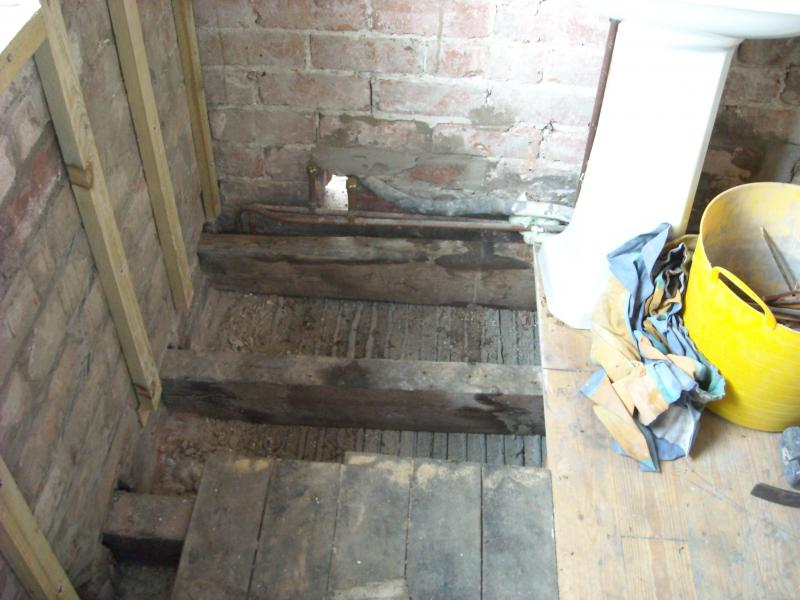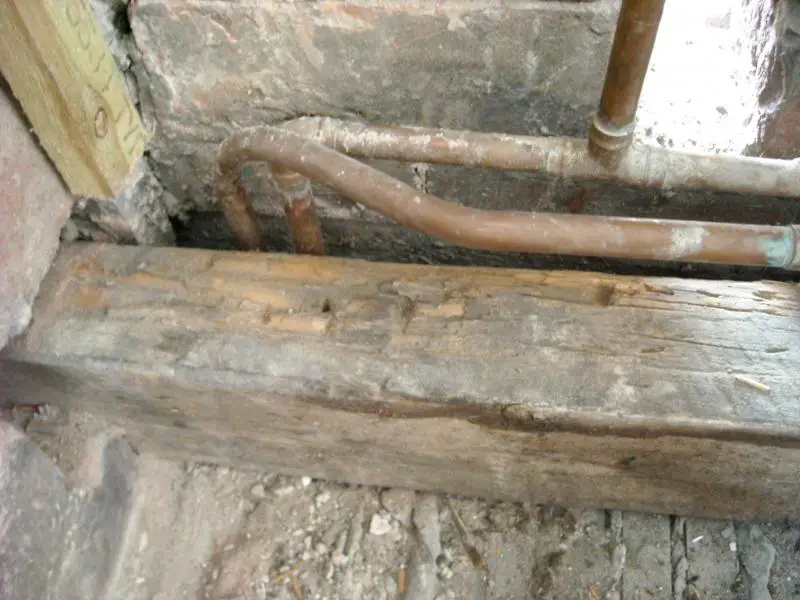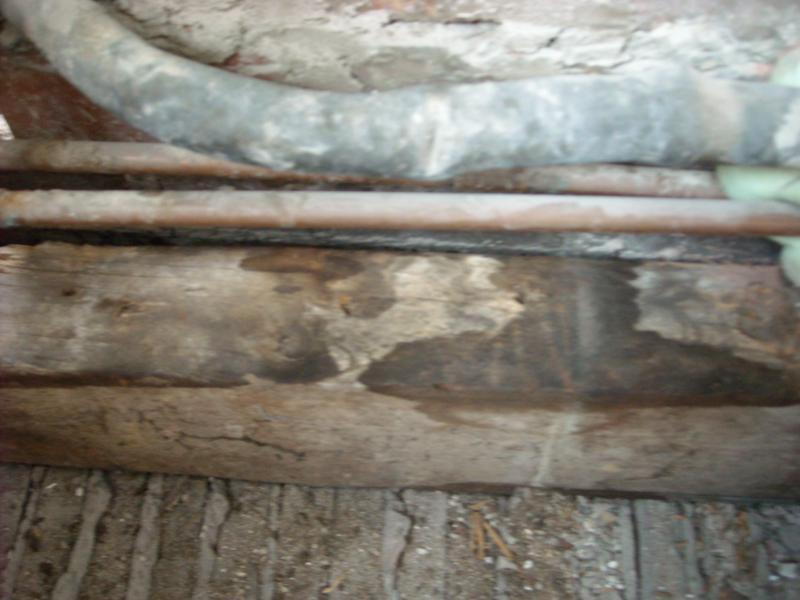I'm ripping out the old T&G pine, ready for 25mm ply for tiling on.
The end joist, shown in the pics, has some dry rot present along the top edge. This can be seen in the second photo, at the left hand end where it's about 1/4" deep. It has also penetrated where nails have held the boards down.
This is probably a combination of water getting at it (it sits under the pipes) and poor ventilation.
I need this sorting fast, would the application of a decent timber treatment (cuprinol) stop it spreading through the joist?
I can improve the ventilation in this part of the floor also, is this recommended? And I can most certainly prevent moisture getting to it by sorting the plumbing good and proper!
I'm off to get some Cuprinol now, however I could do with your suggestions. The joists are 5"x3" and this one spans about 6 feet.
Thanks
The end joist, shown in the pics, has some dry rot present along the top edge. This can be seen in the second photo, at the left hand end where it's about 1/4" deep. It has also penetrated where nails have held the boards down.
This is probably a combination of water getting at it (it sits under the pipes) and poor ventilation.
I need this sorting fast, would the application of a decent timber treatment (cuprinol) stop it spreading through the joist?
I can improve the ventilation in this part of the floor also, is this recommended? And I can most certainly prevent moisture getting to it by sorting the plumbing good and proper!
I'm off to get some Cuprinol now, however I could do with your suggestions. The joists are 5"x3" and this one spans about 6 feet.
Thanks




